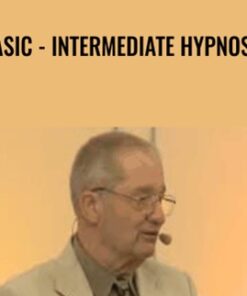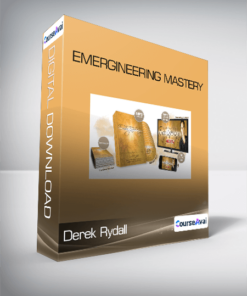2-Day: Trauma and Attachment Certification Course – Lois Ehrmann
Question and Answer
What is a leader?
a leader is Become in the mental health field and elevate your practice with state-ofthe-art advancements for working with some of our toughest clients—children, adolescents and families suffering from trauma and attachment wounds..
How does a leader Become?
Become a leader in the mental health field and elevate your practice with state-ofthe-art advancements for working with some of our toughest clients—children, adolescents and families suffering from trauma and attachment wounds.
What is Purchase 2-Day:?
Purchase 2-Day: is Trauma and Attachment Certification Course - Lois Ehrmann courses at here with PRICE $299.99 $124 Become a leader in the mental health field and elevate your practice with state-ofthe-art advancements for working with some of our toughest clients—children, adolescents and families suffering from trauma and attachment wounds..
How does Purchase 2-Day: elevate?
Purchase 2-Day: Trauma and Attachment Certification Course - Lois Ehrmann courses at here with PRICE $299.99 $124 Become a leader in the mental health field and elevate your practice with state-ofthe-art advancements for working with some of our toughest clients—children, adolescents and families suffering from trauma and attachment wounds.
What is Dr. Lois Ehrmann?
Dr. Lois Ehrmann is Begin by watching for this intensive Trauma and Attachment Certification Course recording and learn the most effective evidence-based therapeutic interventions for clients where the foundational blocks of attachment are fractured and at times not even there..
How does Dr. Lois Ehrmann Begin?
Begin by watching Dr. Lois Ehrmann for this intensive Trauma and Attachment Certification Course recording and learn the most effective evidence-based therapeutic interventions for clients where the foundational blocks of attachment are fractured and at times not even there.
What is Dr. Ehrmann?
Dr. Ehrmann is Let help you take your practice to the next level as she teaches you to integrate bottom up interventions rooted in Eye Movement Desensitization Reprocessing (EMDR), Internal Family Systems (IFS), Attachment Focused Family Therapy, Bibliotherapy, Expressive Therapies, and Somatic Psychotherapy in your treatment of these clients..
How does Dr. Ehrmann Let?
Let Dr. Ehrmann help you take your practice to the next level as she teaches you to integrate bottom up interventions rooted in Eye Movement Desensitization Reprocessing (EMDR), Internal Family Systems (IFS), Attachment Focused Family Therapy, Bibliotherapy, Expressive Therapies, and Somatic Psychotherapy in your treatment of these clients.
What is You?
You is will learn cutting-edge interventions to: Repair and recover your client’s trauma triggers, fears about connecting in relationships, self-destructive patterns, negative limiting beliefs and affect dysregulation Unpack your client’s history and create a cohesive trauma narrative Assess the strength and health of the parental/caregiver system Assess your client’s Internal Working Model and attachment category Operationalize core treatment goals into measurable objectives Neuroscience revelations show us that healing in these areas require bottom up processes and not top down talk therapy processes..
How does You will learn?
You will learn cutting-edge interventions to: Repair and recover your client’s trauma triggers, fears about connecting in relationships, self-destructive patterns, negative limiting beliefs and affect dysregulation Unpack your client’s history and create a cohesive trauma narrative Assess the strength and health of the parental/caregiver system Assess your client’s Internal Working Model and attachment category Operationalize core treatment goals into measurable objectives Neuroscience revelations show us that healing in these areas require bottom up processes and not top down talk therapy processes.
What is video case examples,?
video case examples, is Through video demonstration and thought-provoking lecture this intensive Trauma and Attachment Certification Course recording will make the latest research accessible and user-friendly and clearly link it to your clinical work..
How does video case examples, thought-?
Through video case examples, video demonstration and thought-provoking lecture this intensive Trauma and Attachment Certification Course recording will make the latest research accessible and user-friendly and clearly link it to your clinical work.
What is this opportunity?
this opportunity is Don’t miss to become a Certified Child and Adolescent Trauma Professional (CATP)..
How does this opportunity Don’t miss?
Don’t miss this opportunity to become a Certified Child and Adolescent Trauma Professional (CATP).
What is the neurological impact of trauma?
the neurological impact of trauma is Articulate on attachment in children and adolescents and how current research informs treatment planning..
How does the neurological impact of trauma Articulate?
Articulate the neurological impact of trauma on attachment in children and adolescents and how current research informs treatment planning.
What is the clinical presentation of children and adolescents?
the clinical presentation of children and adolescents is Differentiate between who exhibit insecure vs..
How does the clinical presentation of children and adolescents Differentiate?
Differentiate between the clinical presentation of children and adolescents who exhibit insecure vs.
What is trauma and attachment assessments?
trauma and attachment assessments is Implement to develop observable and measurable treatment plan goals..
How does trauma and attachment assessments Implement?
Implement trauma and attachment assessments to develop observable and measurable treatment plan goals.
What is the “internal working model” intervention?
the “internal working model” intervention is Implement to clarify the client’s attachment category to inform treatment planning. Operationalize the core treatment goals into measurable objectives in the treatment of trauma and attachment. Implement the Integrated Attachment and Trauma Timeline Strategy (IATTS) to organize and construct the client’s trauma narrative..
How does the “internal working model” intervention Implement?
Implement the “internal working model” intervention to clarify the client’s attachment category to inform treatment planning. Operationalize the core treatment goals into measurable objectives in the treatment of trauma and attachment. Implement the Integrated Attachment and Trauma Timeline Strategy (IATTS) to organize and construct the client’s trauma narrative.
What is the client’s trauma narrative?
the client’s trauma narrative is Utilize to process attachment disruptions and trauma responses..
How does the client’s trauma narrative Utilize?
Utilize the client’s trauma narrative to process attachment disruptions and trauma responses.
What is bilateral tapping?
bilateral tapping is Apply to reduce the intensity of strong affect and/or to amplify a strength resource..
How does bilateral tapping Apply?
Apply bilateral tapping to reduce the intensity of strong affect and/or to amplify a strength resource.
What is elements of Internal Family Systems psychotherapy?
elements of Internal Family Systems psychotherapy is Integrate to map out a child’s problematic behavior and the parent’s responses to the behavior..
How does elements of Internal Family Systems psychotherapy Integrate?
Integrate elements of Internal Family Systems psychotherapy to map out a child’s problematic behavior and the parent’s responses to the behavior.
What is bibliotherapy?
bibliotherapy is Utilize to teach children, adolescents and families the concepts of Internal Family Systems psychotherapy to improve treatment outcomes..
How does bibliotherapy Utilize?
Utilize bibliotherapy to teach children, adolescents and families the concepts of Internal Family Systems psychotherapy to improve treatment outcomes.
What is resource?
resource is Integrate tapping (EMDR) into Attachment Focused Family Therapy to increase the strength of attachment and healthy regulation in children, adolescents and families..
How does resource Integrate?
Integrate resource tapping (EMDR) into Attachment Focused Family Therapy to increase the strength of attachment and healthy regulation in children, adolescents and families.
What is clients mindfulness-?
clients mindfulness- is Teach based breath work, guided imagery and sensory awareness to improve affect regulation..
How does clients mindfulness- Teach?
Teach clients mindfulness-based breath work, guided imagery and sensory awareness to improve affect regulation.
What is Attachment Theory and Attachment Therapy Recent?
Attachment Theory and Attachment Therapy Recent is influences in attachment theory and therapy Attachment importance in the development of the healthy individual Attachment styles vs..
How does Attachment Theory and Attachment Therapy Recent influences?
Attachment Theory and Attachment Therapy Recent influences in attachment theory and therapy Attachment importance in the development of the healthy individual Attachment styles vs.
What is disorganized attachment Neuroscience supporting bottom?
disorganized attachment Neuroscience supporting bottom is up therapeutic strategies DSM-5®: Classification of trauma and stressor-related disorders Neurological Impact of Trauma and Attachment How the research informs treatment Trauma is stored/stuck in the right hemisphere Chronic activation of the fight/flight/freeze response (Amygdala issues) The reason for the stuckness Cortisol and its impact on cognitive impairment Indicators of Trauma and Attachment Disruption Common diagnostic mistakes Characteristics of the children and adults View attachment as a continuum Assessments for Trauma and Attachment Wounds Case Studies and Video Sessions Protocol to assess the strength and health of the parental/caregiver system Most effective scales, measures and instruments Methods to explain the Internal Working Model of the child to the parent/caregiver Diagnostic considerations/Differential diagnosis Complex Trauma, Complex PTSD, Developmental Trauma, Disorganized Attachment, Reactive Attachment Disorder Translate Trauma and Attachment Goals into SMART Objectives Core treatment goals Relational factors between client/therapist and child/ parent/caregiver Dismantling the individual’s unhealthy negative internal working model Increase the level of affective mastery Reduce distancing defenses Increase attachment within healthy relationships and for adults with their own children Containment of rage anger and pain so that resolution can occur How to operationalize goals into measurable objectives The Integrated Attachment and Trauma Timeline Strategy (IATTS): Help Children and Families Unpack their History A guide to move from assessment to treatment Techniques to clarify and construct the client’s cohesive narrative Methods to “chunk” overwhelming and disorganized historical material Integrates with evidence-base treatment modalities Eye Movement Desensitization Reprocessing (EMDR) Internal Family Systems (IFS) Attachment Focused Family Therapy Bibliotherapy Expressive Therapies and Somatic Psychotherapy BOTTOM UP TECHNIQUES: PUTTING IT ALL TOGETHER WITH PRACTICE TIME!.
How does disorganized attachment Neuroscience supporting bottom informs?
disorganized attachment Neuroscience supporting bottom up therapeutic strategies DSM-5®: Classification of trauma and stressor-related disorders Neurological Impact of Trauma and Attachment How the research informs treatment Trauma is stored/stuck in the right hemisphere Chronic activation of the fight/flight/freeze response (Amygdala issues) The reason for the stuckness Cortisol and its impact on cognitive impairment Indicators of Trauma and Attachment Disruption Common diagnostic mistakes Characteristics of the children and adults View attachment as a continuum Assessments for Trauma and Attachment Wounds Case Studies and Video Sessions Protocol to assess the strength and health of the parental/caregiver system Most effective scales, measures and instruments Methods to explain the Internal Working Model of the child to the parent/caregiver Diagnostic considerations/Differential diagnosis Complex Trauma, Complex PTSD, Developmental Trauma, Disorganized Attachment, Reactive Attachment Disorder Translate Trauma and Attachment Goals into SMART Objectives Core treatment goals Relational factors between client/therapist and child/ parent/caregiver Dismantling the individual’s unhealthy negative internal working model Increase the level of affective mastery Reduce distancing defenses Increase attachment within healthy relationships and for adults with their own children Containment of rage anger and pain so that resolution can occur How to operationalize goals into measurable objectives The Integrated Attachment and Trauma Timeline Strategy (IATTS): Help Children and Families Unpack their History A guide to move from assessment to treatment Techniques to clarify and construct the client’s cohesive narrative Methods to “chunk” overwhelming and disorganized historical material Integrates with evidence-base treatment modalities Eye Movement Desensitization Reprocessing (EMDR) Internal Family Systems (IFS) Attachment Focused Family Therapy Bibliotherapy Expressive Therapies and Somatic Psychotherapy BOTTOM UP TECHNIQUES: PUTTING IT ALL TOGETHER WITH PRACTICE TIME!
What is A Child?
A Child is Who Had No Safety: Case Study A view of Attachment Focused Family Therapy Healthy vs..
How does A Child Had?
A Child Who Had No Safety: Case Study A view of Attachment Focused Family Therapy Healthy vs.
What is Intersubjectivity and Attunement:?
Intersubjectivity and Attunement: is disrupted attachment/bonding cycle What being in sync does/does not look like PACE: Playfulness, Acceptance, Curiosity and Empathy Co-regulation of affect and co-creation of experiences When Traumatized Children are Broken into Many Parts: Case Study Secure vs..
How does Intersubjectivity and Attunement: disrupted attachment/bonding cycle?
disrupted attachment/bonding cycle Intersubjectivity and Attunement: What being in sync does/does not look like PACE: Playfulness, Acceptance, Curiosity and Empathy Co-regulation of affect and co-creation of experiences When Traumatized Children are Broken into Many Parts: Case Study Secure vs.
What is avoidant attachment?
avoidant attachment is anxious and styles Disorganized attachment: Recognize the signs How attachment impacts parent-child dyads Integrate IFS into Attachment Focused Family Therapy Parts work through sand tray, art strategies and puppetry Repair the Fracture with Adoptive Parents: Case Study Clarify the trauma and negative internal working model Parts mapping: Teach parts concepts to children and parents Integrate Bibliotherapy into IFS Assist parents how to engage in self-led parenting Protecting Sibling and Self In Foster Care: Case Study Protector parts activity/worksheet Teach children to use their inner imagination to work with their part Transform terror into trust The Rage that Comes from Physical Abuse: Case Study When children reenact the trauma of abuse See the positive intention in all parts Teach compassion, curiosity, calmness and connectedness through Expressive therapies Parts that Children Wall Off: Case Study Terrified of being terrified The freeze of the Fight Flight Freeze Trauma Response Help children understand their own thoughts, feelings, behaviors and experiences When Parents and Children Both Have Activated Parts: Case Study Activation Parts Map: Z-Process Naming and witnessing the activated parts Helping the parts understand each other Full of Rage with No Where to Go: Case Study Integrate EMDR into Attachment Focused Family Therapy Teach parents and children resource tapping and positive self-talk Use tapping as part of imaginal nurturing Calming and self-regulating strategies from EFT Naming feelings with bilateral drumming Other Trauma Specific Evidence-base Treatment Modalities What they are used for and why clients seem to respond well Sensorimotor psychotherapy Mindfulness-based approaches including breath work and imagery Biofeedback and EEG Biofeedback Limitations of the related research and risks of each approach Tag: 2-Day: Trauma and Attachment Certification Course - Lois Ehrmann Review..
How does avoidant attachment styles?
anxious and avoidant attachment styles Disorganized attachment: Recognize the signs How attachment impacts parent-child dyads Integrate IFS into Attachment Focused Family Therapy Parts work through sand tray, art strategies and puppetry Repair the Fracture with Adoptive Parents: Case Study Clarify the trauma and negative internal working model Parts mapping: Teach parts concepts to children and parents Integrate Bibliotherapy into IFS Assist parents how to engage in self-led parenting Protecting Sibling and Self In Foster Care: Case Study Protector parts activity/worksheet Teach children to use their inner imagination to work with their part Transform terror into trust The Rage that Comes from Physical Abuse: Case Study When children reenact the trauma of abuse See the positive intention in all parts Teach compassion, curiosity, calmness and connectedness through Expressive therapies Parts that Children Wall Off: Case Study Terrified of being terrified The freeze of the Fight Flight Freeze Trauma Response Help children understand their own thoughts, feelings, behaviors and experiences When Parents and Children Both Have Activated Parts: Case Study Activation Parts Map: Z-Process Naming and witnessing the activated parts Helping the parts understand each other Full of Rage with No Where to Go: Case Study Integrate EMDR into Attachment Focused Family Therapy Teach parents and children resource tapping and positive self-talk Use tapping as part of imaginal nurturing Calming and self-regulating strategies from EFT Naming feelings with bilateral drumming Other Trauma Specific Evidence-base Treatment Modalities What they are used for and why clients seem to respond well Sensorimotor psychotherapy Mindfulness-based approaches including breath work and imagery Biofeedback and EEG Biofeedback Limitations of the related research and risks of each approach Tag: 2-Day: Trauma and Attachment Certification Course - Lois Ehrmann Review.
 2-Day All Things Pulmonary - Cyndi Zarbano
1 × $125.00
2-Day All Things Pulmonary - Cyndi Zarbano
1 × $125.00 10 Steps to Greater Confidence and Self-Esteem - Alexis Meads
1 × $42.00
10 Steps to Greater Confidence and Self-Esteem - Alexis Meads
1 × $42.00 1-2-3 Magic: 3-Step Discipline for Calm, Effective and Happy Parenting - Thomas W. Phelan
2 × $84.00
1-2-3 Magic: 3-Step Discipline for Calm, Effective and Happy Parenting - Thomas W. Phelan
2 × $84.00 3-Day: Vestibular Rehabilitation Intensive Training Course - Jamie Miner
1 × $244.00
3-Day: Vestibular Rehabilitation Intensive Training Course - Jamie Miner
1 × $244.00 Make 'Em Laugh & Take Their Money - Dan Kennedy
1 × $17.00
Make 'Em Laugh & Take Their Money - Dan Kennedy
1 × $17.00 Epic Sequel Fous 4×2
1 × $83.00
Epic Sequel Fous 4×2
1 × $83.00 Split Strike Calendar Class - Sheridan Mentoring
1 × $53.00
Split Strike Calendar Class - Sheridan Mentoring
1 × $53.00 Basic - Intermediate Hypnosis - Gerald Kein
1 × $93.00
Basic - Intermediate Hypnosis - Gerald Kein
1 × $93.00 Derek Rydall - Emergineering Mastery
1 × $31.00
Derek Rydall - Emergineering Mastery
1 × $31.00 Advanced EKG Assessment - Cathy Lockett
1 × $30.00
Advanced EKG Assessment - Cathy Lockett
1 × $30.00 Mastering Lab Interpretation: Deciphering the Hidden Clues - Sean G. Smith
1 × $84.00
Mastering Lab Interpretation: Deciphering the Hidden Clues - Sean G. Smith
1 × $84.00 0-100k Case Study from Grant Ambrose
0-100k Case Study from Grant Ambrose